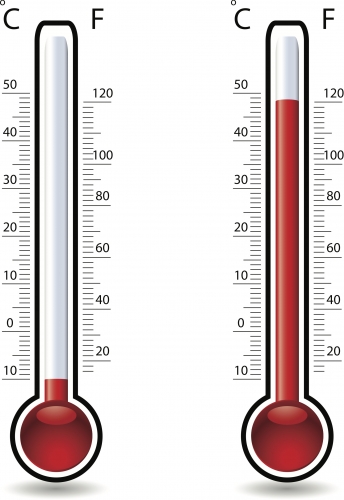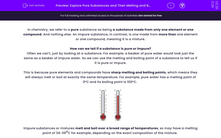In chemistry, we refer to a pure substance as being a substance made from only one element or one compound. And nothing else. An impure substance, in contrast, is one made from more than one element or one compound, meaning it is a mixture.
How can we tell if a substance is pure or impure?
Often we can't, just by looking at a substance. For example, a beaker of pure water would look just the same as a beaker of impure water. So we can use the melting and boiling point of a substance to tell us if it is pure or impure.
This is because pure elements and compounds have sharp melting and boiling points, which means they will always melt or boil at exactly the same temperature. For example, pure water has a melting point of 0°C and its boiling point is 100°C.

Impure substances or mixtures melt and boil over a broad range of temperatures, so may have a melting point of 34-39oC for example, depending on the exact composition of the mixture.
Pure substances and impure substances can be identified by comparing their melting point with published reference data of what the melting point should be.
Impurities in a substances also tend to lower the melting point of a substance, so for example, pure copper has a melting point of 1,084oC, but if you add an impurity to a piece of copper it would lower its melting point slightly to say 1,078oC. However, impurities will increase the boiling point of a substance.
Let's try some questions.








